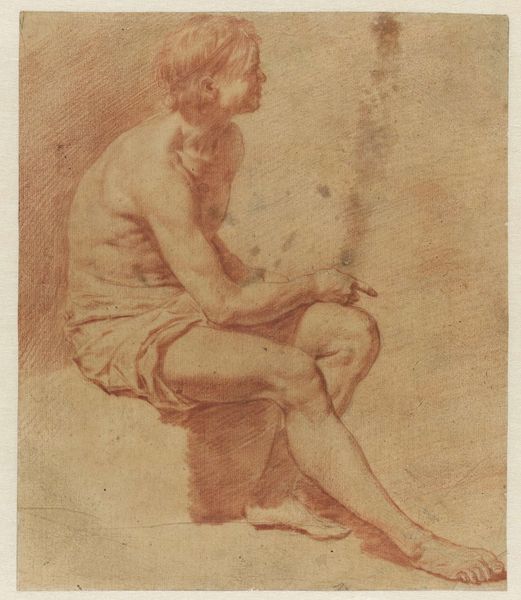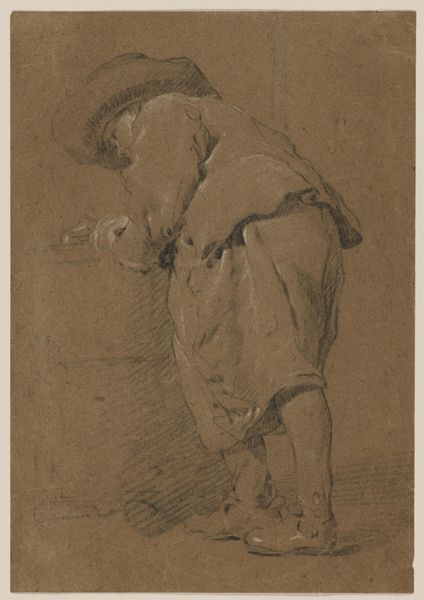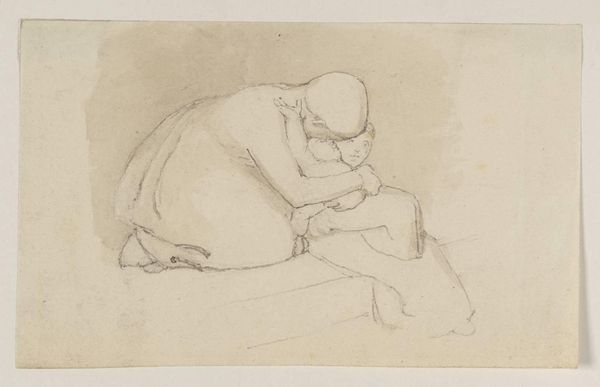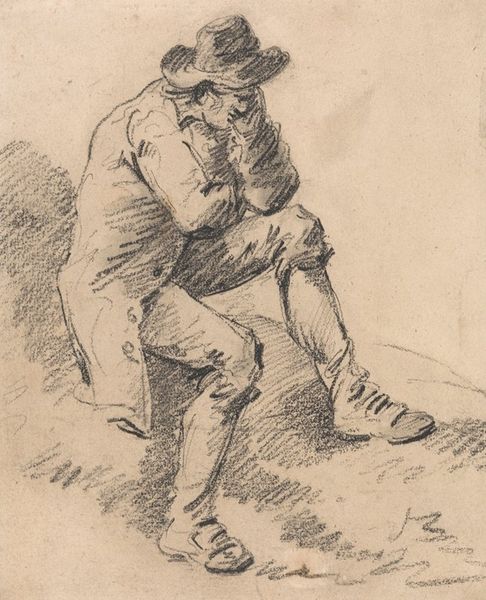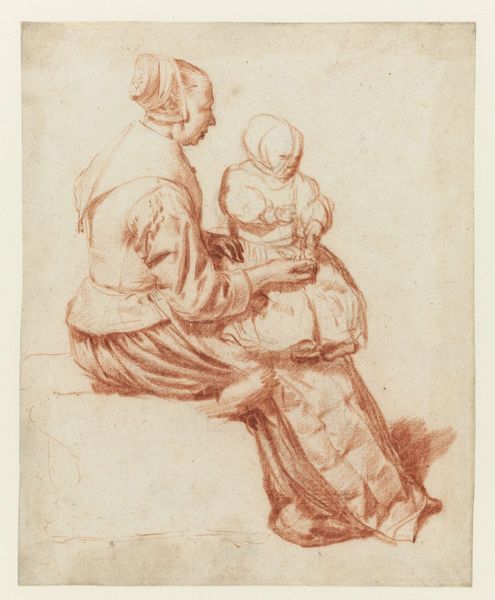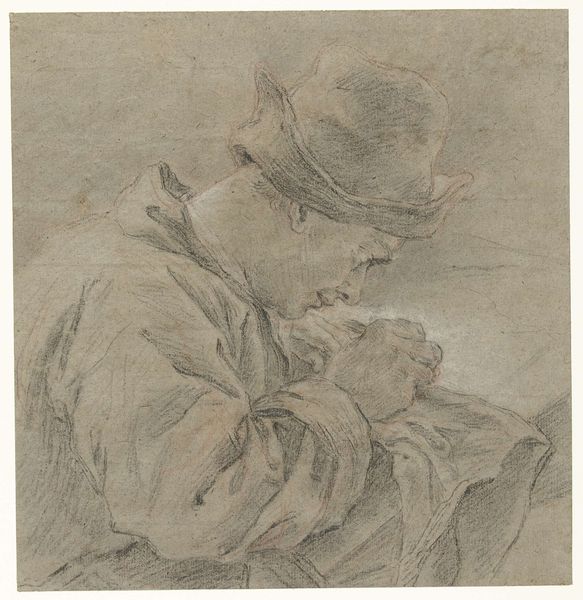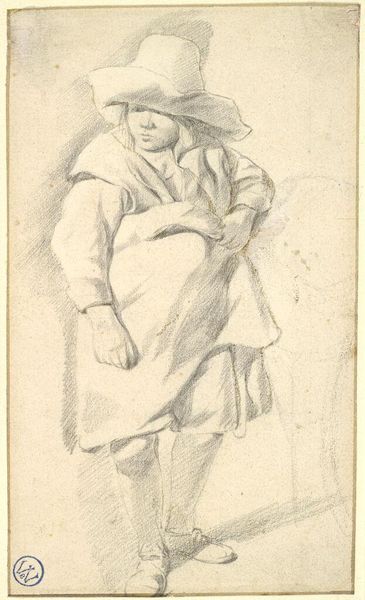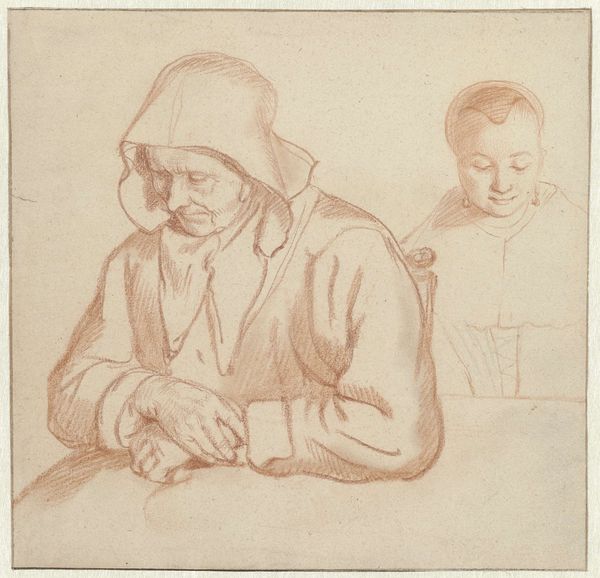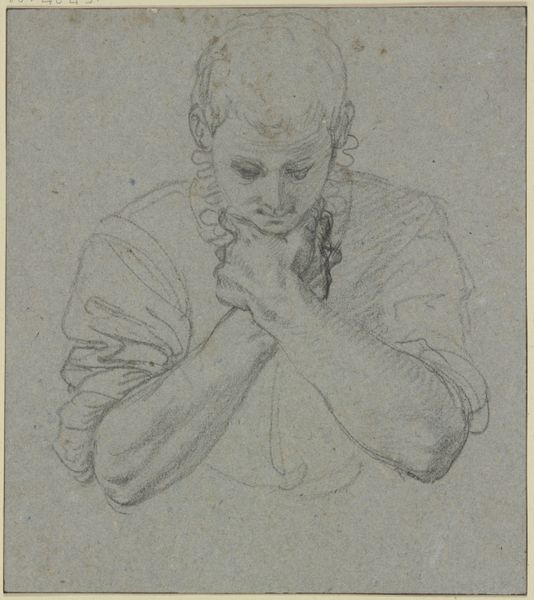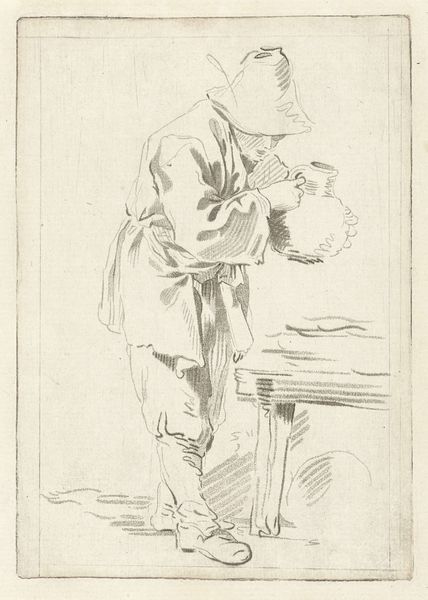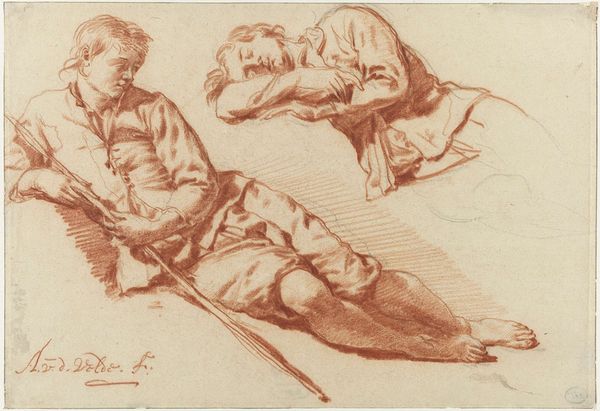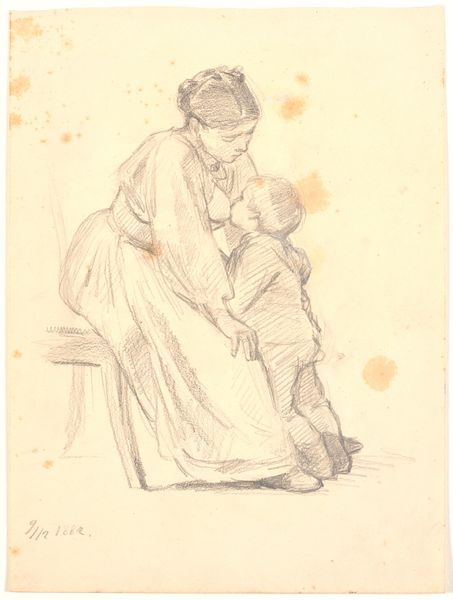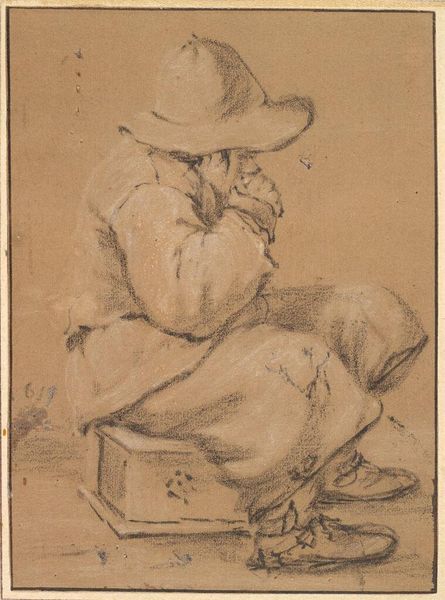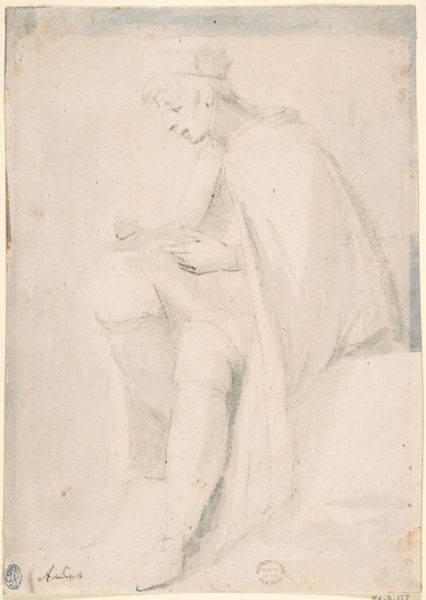
Seated Man with a Soft Cap, in Profile to the Right, with his Right Hand Raised c. 1658 - 1660
0:00
0:00
drawing, pencil
#
drawing
#
dutch-golden-age
#
pencil drawing
#
pencil
#
portrait drawing
#
genre-painting
Dimensions: height 166 mm, width 154 mm
Copyright: Rijks Museum: Open Domain
Editor: This is Cornelis Bega's "Seated Man with a Soft Cap, in Profile to the Right, with his Right Hand Raised," made around 1658-1660. It's a delicate pencil drawing. I’m struck by the intimacy of it. What do you see in this piece? Curator: It's interesting that you pick up on the intimacy, because Dutch Golden Age art, despite its focus on everyday life, often overlooks the individual's inner experience. I see this work as a reflection on labor and perhaps the social standing of the sitter. Consider the man’s modest cap and worn clothing, versus the loose gesture of his raised hand – it begs the question: what has his labour afforded him, both physically and emotionally? How does Bega portray the human condition within the rigid social hierarchy of the Dutch Republic? Editor: So, you are wondering if it reveals something about class? Curator: Precisely! Bega doesn’t shy away from representing the working class, and his sketches, unlike finished paintings, provide a raw glimpse into their world. What do you make of the way his face is turned away? Is he hiding from something, or lost in thought? Editor: Maybe he is lost in thought, or maybe he is being overlooked, made invisible. It emphasizes the theme of working-class life and highlights their struggles in Dutch society. Curator: Yes! We must remember the historical context. The Dutch Golden Age was a period of immense wealth, but not everyone shared in that prosperity. Bega’s work, through its subtle depiction of this seated man, becomes a commentary on economic inequality and its human cost. Editor: It's really eye-opening to consider how seemingly simple portrait drawings like this one can actually contain these profound social critiques. Thanks so much! Curator: My pleasure. It reminds us to always question whose stories are being told, and whose are being omitted.
Comments
No comments
Be the first to comment and join the conversation on the ultimate creative platform.
